Today’s Current Affairs: 27th June 2024 for UPSC IAS exams, State PSC exams, SSC CGL, State SSC, RRB, Railways, Banking Exam & IBPS, etc
Table of Contents
Skin Bank Facility : Indian Army

The Indian Army has recently launched a skin bank facility
- Indian Army’s Skin Bank was launched to help treat severe skin burn injuries and other skin-related conditions for service personnel and their families.
- The first-of-its-kind facility established in the Armed Forces Medical Servicesis staffed with trained medical professionals, including plastic surgeons, tissue engineers, and specialised technicians.
- It will serve as a centralised hub for the collection, processing, storage, and distribution of skin grafts, providing a “critical resource” for military medical centres across the country.
- A skin bank is a facility where skin is taken from an eligible donor, and processed, and stored under appropriate temperature for up to five years.
- Skin from a deceased person can be donated within six hours after death.
- Anyone can donate skin, irrespective of sex and blood group. The donor’s minimum age should be 18 years.
- The skin of persons suffering from AIDS, Hepatitis B & C, Sexually Transmitted Diseases, Skin Cancer, Active skin Disease and Septicemia are considered unfit for donation.
- This donated skin is then collected and processed over five to six weeks and frozen until it’s needed.
- The skin is generally preserved in 85% glycerol solution. It is stored between 4-5 degrees Celsius for up to 5 years.
- When a burn victim requires skin for their injuries, a surgical procedure called skin grafting is conducted.
Jal Jeevan Mission : Update
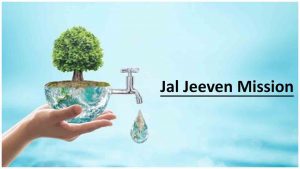
The Central Government is conceiving a “new project” to ensure that rural households, which were provided taps under the ambitious Jal Jeevan Mission but had not yet been able to avail water, would soon be provided potable water.
- Jal Jeevan Mission (JJM) is envisioned to provide safe and adequate drinking water through individual Functional Household Tap Connections (FHTCs) by 2024 to all households in rural India.
- JJM will be based on a community approach to water and will include extensive Information, Education and communication as key components of the mission.
- The Mission was launched on August 15, 2019.
- Nodal Ministry: Ministry of Jal Shakti.
- Development of in-village piped water supply infrastructure to provide tap water connections to every rural household.
- Community engagement in planning, implementation and Operation and Maintenance (O&M)
- Involvement of women in planning, decision-making, implementation, monitoring, and O&M
- Provision of tap water supply to schools, tribal hostels, and anganwadi (daycare) centers
- Local people are skilled for building and maintaining water supply structures
- Reuse and recycle waste water for source sustenance
- Promote groundwater recharge and water conservation
- Ensure safe drinking water to reduce water-borne ailments
India’s External Debt : Update

India’s external debt was placed at $663.8 billion, an increase of US$ 39.7 billion over its level at end-March 2023, informed the Reserve Bank of India recently.
- At end-March 2024, India’s external debt was US$ 663.8 billion, an increase of US$ 39.7 billion over its level at end-March 2023.
- The external debt-to-GDP ratio declined to 18.7 percent end-March 2024 from 19.0 percent at end-March 2023.
- The Valuation effect due to the appreciation of the US dollar vis-à-vis the Indian rupee and other major currencies such as the yen, euro and SDR amounted to US$ 8.7 billion.
- Valuation effects are the change in value of assets held abroad with regard to the value of domestic assets held by foreign investors.
- Excluding the valuation effect, external debt would have increased by US$ 48.4 billion instead of US$ 39.7 billion at end-March 2024 over end-March 2023.
- At end-March 2024, long-term debt (with an original maturity of above one year) was placed at US$ 541.2 billion, recording an increase of US$ 45.6 billion over its level at end-March 2023.
- The share of short-term debt (with an original maturity of up to one year) in total external debt declined to 18.5 percent at end-March 2024 from 20.6 per cent at end-March 2023.
- Similarly, the ratio of short-term debt (original maturity) to foreign exchange reserves declined to 19.0 percent at end-March 2024 (22.2 per cent at end-March 2023).
- US dollar-denominated debt remained the largest component of India’s external debt, with a share of 53.8 percent at end-March 2024, followed by debt denominated in the Indian rupee (31.5 percent), yen (5.8 percent), SDR (5.4 percent) and euro (2.8 percent).
- Outstanding debt of both government and non-government sectors increased at end-March 2024 over the level a year ago.
- The share of outstanding debt of non-financial corporations in total external debt was the highest at 37.4 percent, followed by deposit-taking corporations (except the central bank) (28.1 percent), general government (22.4 percent) and other financial corporations (7.3 percent).
- Loans remained the largest component of external debt, with a share of 4 percent, followed by currency and deposits (23.3 percent), trade credit and advances (17.9 percent) and debt securities (17.3 percent).
- Debt service increased to 6.7 percent of current receipts at end-March 2024 from 5.3 percent at end-March 2023, reflecting higher debt service.
Livestock Census : Upcoming

The Department of Animal Husbandry & Dairying (DAHD) hosted a workshop for the upcoming 21st Livestock Census scheduled for September to December 2024.
- This aimed to equip State and Union Territory officers with the necessary tools, including a mobile app and software, for efficient data collection during the census.
- Officials were trained on data collation strategies and familiarized with various registered breeds of livestock.
- A livestock census has been conducted across the country every 5 years since 1919.
- As per the 20th Census conducted in 2019, total Livestock population in India is 535.78 million.
- The total Bovine population (Cattle, Buffalo, Mithun and Yak) was 302.79 Million.
- For development of livestocks, the National Livestock Mission (NLM) scheme launched in the 2014-15 consists of 3 sub-missions as Breed Development of Livestock & Poultry, Feed & Fodder Development and Innovation & Extension.
Chhatrapati Shivaji’s Coronation:

The exhibition depicting 115 oil paintings of Shivaji Maharaj was organised by the Indira Gandhi National Centre for the Arts (IGNCA) and the National Gallery of Modern Art (NGMA) to mark the 350th anniversary of the coronation of Chhatrapati Shivaji .
- The paintings at the exhibition were created under the guidance of Padma Vibhushan Babasaheb Purandare.
- Chhatrapati Shivaji Maharaj was crowned as the king of the Marathas on 6th June 1674, at Raigad.
- He was born on 19th February 1630 at Shivneri Fort in District Pune.
- His father Shahaji Bhonsle was a Maratha general under the Bijapur Sultanate and his mother was Jijabai.
- He took on the titles of Chhatrapati, Shakakarta, Kshatriya Kulavantas and Haindava Dharmodhhaarak.
Kerala Seeks Renaming To Keralam:
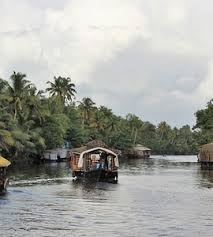
The Kerala Assembly unanimously passed a resolution asking the Centre to rename the state as “Keralam’’ in the Constitution.
- Article 3 of the Indian Constitution empowers the Centre to change the name of existing states which also needs amendment in the name of the state listed under Article 1 of the constitution.
- Kerala is the English word for the Malyali Keralam and the earliest mention of the word can be found in Emperor Ashoka’s Rock Edict II of 257 BCE which mentions “Keralaputra”.
- Keralaputra in Sanskrit literally means “son of Kerala” which refers to the dynasty of the Cheras, one of the three main kingdoms of southern India (the other two dynasties being Chola and Pandya).
- The demand for a united Malayalam-speaking state was first raised in the 1920s and after independence, in 1949, the state of Travancore-Cochin was formed by integrating the two Malayalam-speaking princely states of Travancore and Cochin.
- Based on the recommendation of the State Reorganisation Commission, the state of Kerala was finally created on a linguistic basis.
Underground Coal Gasification: Jharkhand

The Ministry of Coal has initiated India’s first pilot project for Underground Coal Gasification (UCG) in Jharkhand, aiming to revolutionize the coal industry.
- Coal gasification is a process that converts underground coal into valuable gases such as methane, hydrogen, carbon monoxide, and carbon dioxide.
- This is achieved by partially oxidizing coal using air, oxygen, steam, or CO2 under controlled conditions to produce syngas, a mixture of carbon monoxide and hydrogen.
- Syngas can be used for power generation and making methanol.
- India has initiated the National Coal Gasification Mission, aiming for 100 million tons of coal gasification by 2030, allowed 100% FDI in coal mining, and implemented the Viability Gap Funding scheme for promoting coal and lignite gasification projects.
International Hydrographic Organisation (IHO):

The International Hydrographic Organisation (IHO) celebrates World Hydrography Day on June 21 each year to raise awareness about hydrography’s role in improving knowledge of seas and oceans.
- Hydrography is the science of measuring and describing the physical features of oceans, seas, coastal areas, lakes, and rivers.
- The Indian Naval Hydrographic Department (INHD), under the Indian Navy, is responsible for hydrographic surveys and nautical charting in India.
International Hydrographic Organisation (IHO):
- The International Hydrographic Organization (IHO) is an intergovernmental organization that ensures the world’s seas, oceans, and navigable waters are surveyed and charted.
- It coordinates the activities of national hydrographic offices.
- The IHO Secretariat has been based in Monaco since its establishment in 1921. The organization has 100 member states, including India.
PESA : Forest Conservation In India
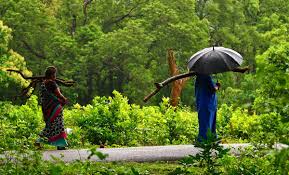
The Panchayat (Extension to Scheduled Areas) Act (PESA) empowered Scheduled Tribes by mandating political representation in local governance, thereby linking their livelihood needs with forest conservation.
- The Panchayat (Extension to Scheduled Areas) Act (PESA) of 1996 extended Part IX of the Constitution, which pertains to Panchayats, to Scheduled Areas.
- These areas, defined under Article 244(1), receive special provisions under the Fifth Schedule of the Constitution.
- PESA mandates political representation for Scheduled Tribes (STs) in local governance, ensuring they have a significant role in decision-making regarding their resources and livelihoods.
- This act applies in ten states across India, covering various districts under the Fifth Schedule, aiming to empower ST communities economically and environmentally
- The conflict in conservation efforts in India centres on balancing conservation with local resource extraction and economic development.
- The government often prioritizes large-scale economic projects such as mining and dam construction over forest conservation, driven by the interests of the political elite.
Forest Rights Act, 2006, and PESA 1996:
Promoting Environmental Conservation:
- The Forest Rights Act recognizes and vests forest rights in the hands of forest-dwelling communities.
- By empowering these communities with ownership and access rights, FRA promotes sustainable forest management.
g. In Mendha Lekha, Maharashtra, tribal communities utilized FRA to gain control over their traditional forests. - The act emphasizes the conservation of biodiversity and ecological balance. By involving local communities in the conservation process, it contributes to maintaining diverse ecosystems.
- For instance, the Bishnois of Rajasthan, under the FRA, has played a crucial role in protecting the blackbuck, an endangered species.
- The act recognizes community forest rights, providing communities with the authority to protect and manage forests collectively. This communal approach fosters environmental conservation.
- The Dongria Kondh tribe in Odisha used FRA to protect the Niyamgiri Hills, a biodiversity hotspot.
Innovations For Defence Excellence:
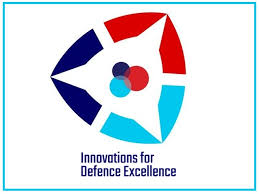
The 350th contract under the Innovations for Defence Excellence (iDEX) was signed with SpacePixxel Technologies Pvt Ltd for miniaturised satellite.
- Innovations for Defence Excellence (iDEX) is the flagship initiative of the Union Ministry of Defence.
- It aims to achieve self-reliance and foster innovation and technology development in Defence and Aerospaceby engaging Industries including MSMEs, start-ups, individual innovators, R&D institutes and academia.
- It has partnered with leading incubators in the country to provide handholding, technical support and guidance to the winners of iDEX challenges.
- iDEX will be funded and managed by a ‘Defence Innovation Organization (DIO)’ which has been formed as a ‘not for profit companyas per Section 8 of the Companies Act 2013 by the two founder members, i.e. Defence Public Sector Undertakings (DPSUs) – HAL & BEL.
- It functions as the executive arm of DIO, carrying out all the required activities, while DIO will provide high-level policy guidance to iDEX.
- Under iDEX, financial support is provided to Start-ups/MSMEs/individual innovators and Partner Incubators through DIO.
- It has launched 11 editions of the Defence India Start-up Challenge and recently unveiled the Acing Development of Innovative Technologies with iDEX (ADITI) scheme to promote innovations in critical and strategic defence technologies.
- It was the recipient of Prime Minister Award for Public Policy in Innovation Category in 2021 and is currently engaged with over 400 start-ups and MSMEs.
ALMA Telescope:

Using the powerful Atacama Large Millimeter/submillimeter Array (ALMA) telescope, astronomers have gained new insights into how planets form around binary star systems, where two stars orbit a common centre of mass.
- ALMA Telescope is a state-of-the-art telescope that studies celestial objectsat millimetre and submillimetre wavelengths.
- It is a radio telescope comprising 66 antennas located in the Atacama Desert of northern Chile.
- They can penetrate through dust clouds and help astronomers examine dim and distant galaxies and stars out there.
- It also has extraordinary sensitivity, which allows it to detect even extremely faint radio signals.
- The telescope consists of 66 high-precision antennas, spread over a distance of up to 16 km.
- It is operated under a partnership between the United States and 16 countries in Europe, Canada, Japan, South Korea, Taiwan and Chile.
- The radio telescope was designed, planned and constructed by the US’s National Radio Astronomy Observatory (NRAO), the National Astronomical Observatory of Japan (NAOJ) and the European Southern Observatory (ESO).
Saipan Island:
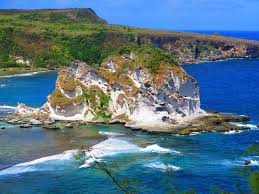
Julian Assange is en route to a courtroom on the Pacific island of Saipan where he is expected to plead guilty to a single criminal charge in a plea deal that will see him walk free and return home to Australia.
- Saipan Island is located in the Western Pacific Ocean.
- It is the capital of the Northern Mariana Islands (NMI), a US commonwealth in the western Pacific which beginsroughly 70 km (44 miles) north of Guam and stretches across 14 islands.
- It was a colony of Spain, Germany and then Japan, the United States took control of the island in World War-II.
- Like territories such as Guam or Puerto Rico, the Northern Mariana Islands are part of the US without the full status of a state.
- In 1975 residents of this island voted to join the United States as a territory. The territory has a permanent delegate in the US House of Representative, although they cannot vote.
- Highest point: Mount Tapochau
- Tourism is the mainstay of the economy and it is popular with Korean and Chinese tourists.
- It is the only part of the United States that Chinese citizens can enter without a visa.
Indian Painted Frog:
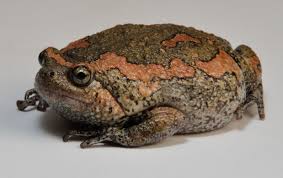
A rare Indian Painted Frog was recently sighted at Telangana’s Kawal Tiger Reserve, marking a significant find outside its usual habitats.
- Indian Painted Frog is a species of narrow-mouthed frog that is part of the Microhylidae family.
- Scientific Name: Uperodon taprobanicus
- It is found in Sri Lanka, Bangladesh, southern and eastern India, and Nepal up to an altitude of about 1300 metres.
- It is most common in Sri Lanka.
- In India, it is found in the states of West Bengal, Odisha, Assam, Karnataka, Kerala, Telangana, Tamil Nadu, and Andhra Pradesh and is most common in the southern areas of the Western and Eastern Ghats.
- It can grow to an adult length of up to 75 millimetres (7.5 cm) from snout to vent with females being slightly larger than males.
- This species is notable for its striking appearance, characterized by its smooth, rounded body and distinctive colouration, which often includes shades of brown, with patches of brighter colours such as orange or yellow.
- Conservation Status:
- IUCN Red List: Least Concern
Kawal Tiger Reserve:
- It is located in northeastern part of Telangana(Old Adilabad district), with the Godavari River on one side and the Maharashtra border on the other.
African Swine Fever : Outbreak
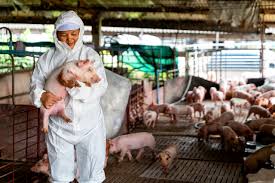
The death toll of pigs following the outbreak of the African Swine Fever (ASF) disease in Mizoram since February has crossed 3,350, officials said recently.
- African Swine Fever (ASF) is a highly contagious viral disease of domestic and wild pigs, whose mortality rate can reach 100%.
- The ASF virus is a large, enveloped, double-stranded DNA virus that is the sole member of the genus Asfivirus within the family Asfarviridae.
- The clinical symptoms can look very much like those of classical swine fever: fever, weak pigs, lack of appetite, inflamed eye mucous membranes, red skin, (bloody) diarrhea and vomiting.
- ASF can be spread through:
- Direct contact with infected animals
- Indirect contact through the ingestion of products from infected animals, contact with contaminated clothing, vehicles, or equipment
- Bites by infectious soft ticks (where present)
- The ASF virus is able to survive for long periods in pork and pork meat products.
- It is endemic to sub-Saharan Africabut has spread to many other regions of the world, including Asia and Europe.
- In India, it was first confirmed in Arunachal Pradesh and Assam in February-March 2020.
- It is not a danger to human health.
- Meat or other products from pigs do not pose any food safety risks for humans. But it has devastating effects on pig populations and the farming economy.
- There is no cure or precaution available for the infection, and there is no approved vaccine.
- So, the only way to stop it from spreading is by culling the animals.




